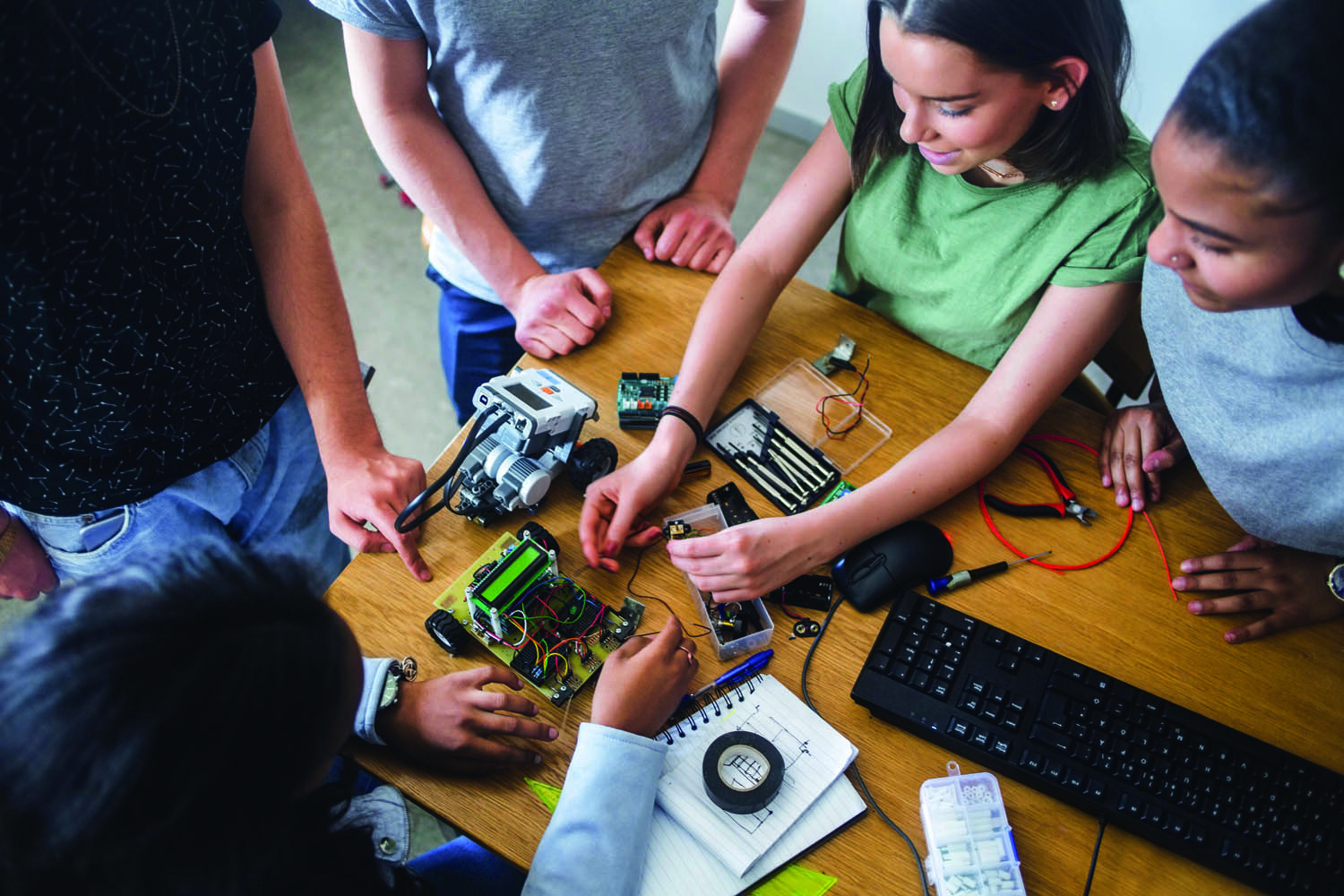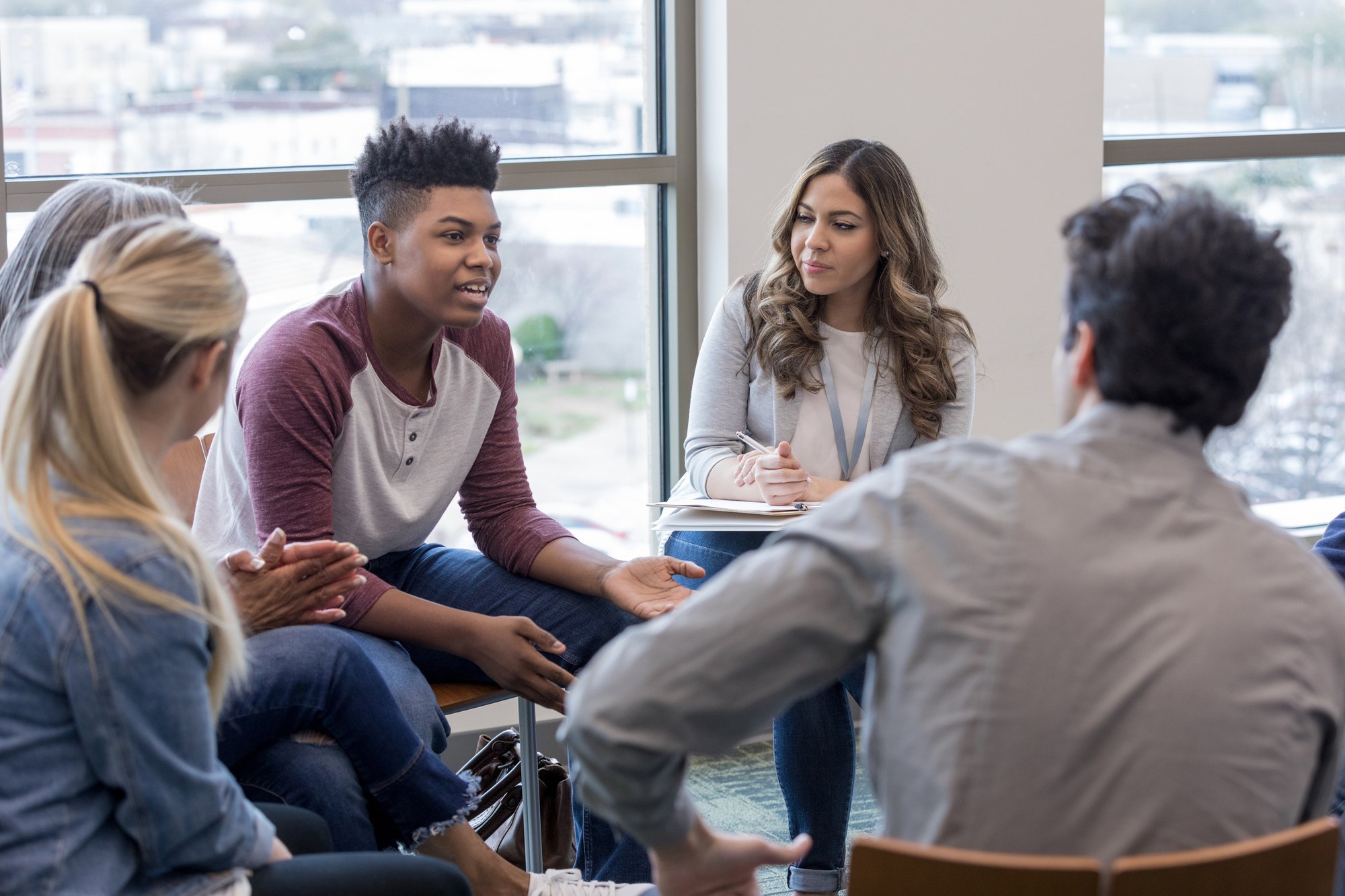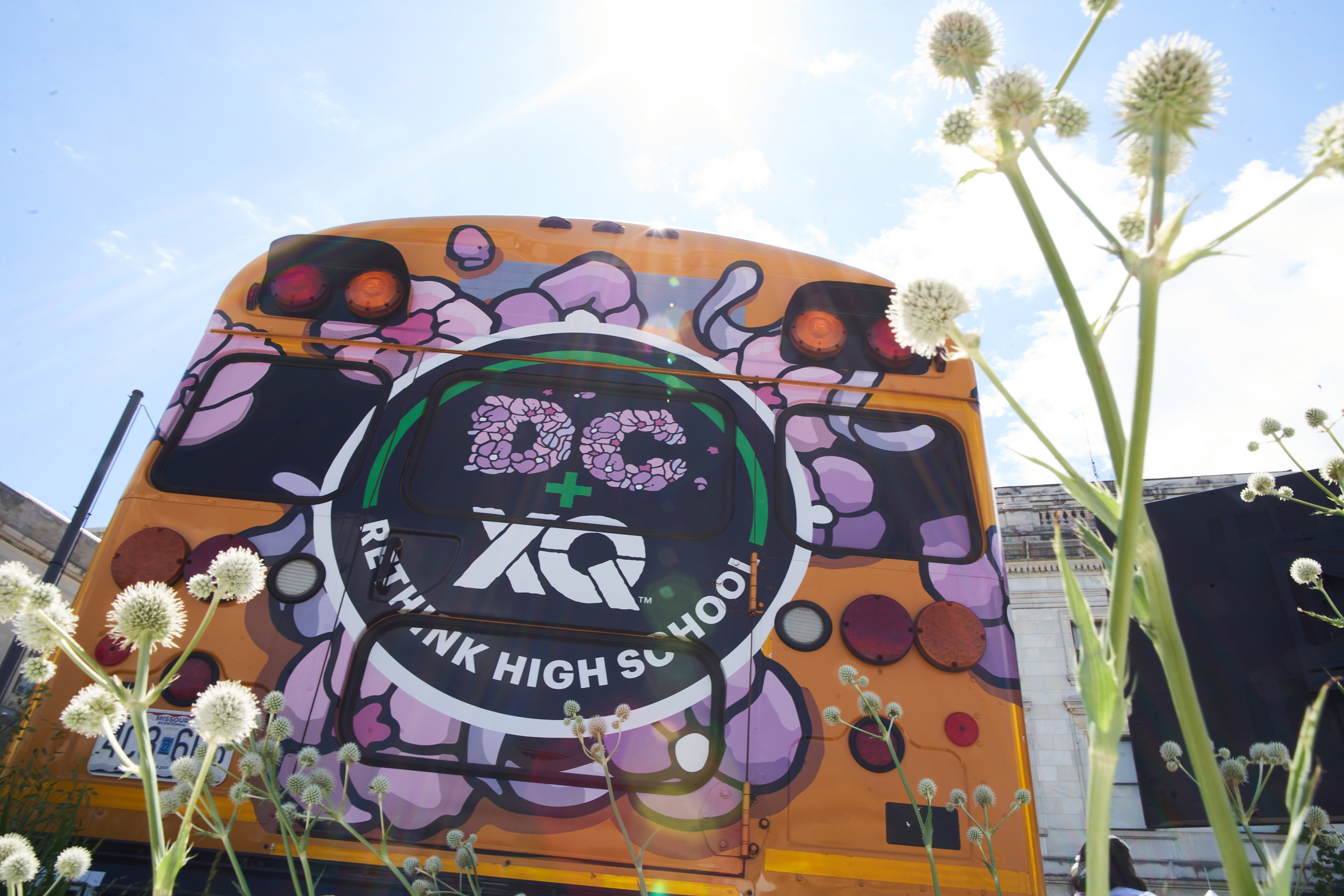Federal COVID Relief Funds Are Available to States and Districts. Let’s Invest Them in High School Transformation.
ARP ESSER funding offers America a chance to examine what’s working in education, develop individualized pathways that accelerate student learning, and create coalitions to build a truly fair and effective education system.

Public education is at an inflection point. The federal government has responded to the COVID crisis and its profound disruption to public schools with historic investments in K-12 education. The CARES Act at the start of the pandemic, the COVID response and relief package in December 2020, the Governors’ Emergency Education Relief (GEER) funds, and the March 2021 American Rescue Plan, specifically ARP’s Elementary and Secondary School Emergency Relief (ESSER) fund, all include significant funding for K-12 education. And with those investments, we have a once-in-a-lifetime opportunity to create the long-term systemic change public education desperately needs—and deliver on a promise of greater equity, rigor, and innovation.
As a nation, we have a responsibility to the next generation to get this RIGHT. And because of the terms of the funding packages, we have to get it right … right now. Over the next three years, America has a chance to examine what’s working in education, develop individualized pathways that accelerate student learning, and create coalitions to build a truly fair and effective education system.
Let’s be clear about who is at the core of this work: students themselves. Our nation’s young people are brimming with potential, possibilities, and ingenuity. Yet they are too often left out of meaningful discussions about their own education. This past year, through all its challenges and difficulties, we watched our nation’s young people advocate for their needs and develop resilience in a deeply uncertain world. Now it is our turn to meet them where they are, by building an education system with student agency and experience at the center, with students in mind, and with student input leading to real, lasting impact.
This is why XQ is actively listening to students—virtually and in person—about what matters to them in education as we rebuild for a better future. We’ve heard students like Alexis Rodriguez, a 10th grader from San Francisco, demand that we “normalize reimagination [because] we are not going to impact generations to come if we keep recycling the same solutions.” She’s right. The old approaches will not serve today’s students, in today’s world.
In all our conversations with students, we hear the same desires. They yearn for an education that is deeper and more purposeful, for schools that care about their emotional needs just as much as their academic success. For schools that respect them as individuals. For approaches that reward and reaffirm their individuality by providing a high quality education to every student no matter their background.
They long for choice and flexibility in what, when, where, and how they learn, and for opportunities to develop real, genuine, and authentic control over their own lives and learning. They envision vibrant high schools that prepare them for a more equitable and sustainable world, a rapidly innovating workforce, and all the future has to offer. We should listen to—and trust—them.
Policymakers, educators, and communities must be accountable to the dreams, ambitions, and vision of this generation. Now is the time to answer their call for truly fair and effective change in high schools for all students. Federal COVID relief funding provides the opportunity to make this a reality. Take it from the students whose futures depend on it: “I think it’s important to create structures and to use [the federal dollars] as seeds,” says Josh Stern, a 2021 New York City high school graduate and vocal student voice advocate. “Let’s explore what we can do now in terms of long-term infrastructure. Lay down the roots of the education tree.”

Why High School Transformation? And Why Now?
High school is the critical juncture for young adults. It’s when they have—or should have—the opportunities to decide their pathway to success and fulfillment in life. It bridges their K-8 education and their future lives as adults with good jobs and successful careers. It’s also a place and time for profound personal, social-emotional, and intellectual growth. The latest research shows that teenage brains are primed to learn, with big changes happening in parts of the brain that control reasoning, planning, and self-control. With the right stimulation, even IQ—once viewed as immutable—can increase during these important years. We have a responsibility to ensure students’ high school years set them up for lifelong success long after graduation.
The pandemic disrupted our high schools. It denied students formative opportunities—to learn, to build relationships, and to explore their own identities—in this crucial period. We heard this disappointing, but essential, truth directly from parents, educators, and students across the country. High school students nationwide fell behind in their learning, suffered personal loss, or struggled to stay connected with teachers, counselors, and peers. At the same time, educators had to pivot, stretch, and invent continuously over this long, uncertain time. Everyone sacrificed. Now is the time to build something better for what comes next. That is our mission.
When high school communities come back together, they will need new kinds of support to create meaningful and engaged learning experiences. Going back to the old way of doing things is the wrong approach. Now is the time for real, lasting change that leads to real, lasting results.
The pandemic showed us just how much energy and dedication our students, educators, and communities have to come back stronger. High schools cannot return to the pre-pandemic status quo, and we have resources and opportunity to do what we’ve never done before: change high schools fundamentally, for the better.
Reopening schools, engaging students and families, accelerating student learning, and providing equitable opportunities for all students now and into the future will require the commitment of systems leaders at all levels, from classroom teachers, students, and local school boards to the federal Department of Education—and states play an essential role.
| Want to learn more about your own state’s ARP funding? Click Here to Find Your State! |
COVID relief funds allow state and local school systems to meet immediate needs, such as reopening schools and accelerating learning for all students. But because these funds are highly flexible and can be spent over the next three years, ARP presents states and districts with vast opportunities to build infrastructure for learning and hyper-resilient schools—schools that work for the individual needs of every student, no matter what the future brings.


Recommendations to Support High School Transformation
This is the moment for all of us—policymakers, students, educators, families, and communities—to join together to create a vision and a plan for high school transformation. Better education results in better opportunities for students. It results in better citizens. It results in happier, healthier lives for generations.
Every dollar matters, and it’s not enough to spend more. We must spend smarter—more imaginatively, efficiently, and effectively. These once-in-a-lifetime funds can build a legacy of impactful change that transforms our education system permanently. It is essential that we all get this right. No excuses, no exceptions.
First and foremost, when allocating funding, consider the students in your state. Nationwide, approximately 30 percent of K-12 students are currently in high school, so make sure to dedicate at least a proportionate amount—approximately 30 percent of federal COVID relief dollars, depending on your state—to long-term high school transformation that directly impacts high school students and the schools in which they learn.
But a proportionate high school allocation is just the beginning. As states develop and activate their priorities, we recommend focusing on:
- Improving critical high school infrastructure
- Engaging in community-led design of high schools
- Redesigning the daily learning experience for students
- Ensuring all students are prepared for college, career, and life after graduation
Invest in infrastructure.
This is an opportunity to build the educational spaces and resources that we have always envisioned for young people. Visionary infrastructure spending includes building technology, curriculum, and facilities that are constantly improving and are hyper-resilient toward the challenges and changes specifically facing your community in the future.
States should:
- Invest in high-quality, modern facilities while making health and safety upgrades, such as science labs, greenhouses, libraries, and other 21st-century learning spaces where students are engaged as active collaborators in their own learning environment;
- Guarantee and deliver universal access to technology—not just devices and internet access, but the learning management systems, professional development supports, and tools that support 21st century teaching and learning;
- Ensure fair education funding, so that every student from every community has a chance at success; and
- Diversify the teaching corps, so that our students have the opportunity to learn from the very best, from every background.
Empower communities to reimagine high school.
The Department of Education requires states to seek community input from stakeholders such as families, educators, and students on how to spend COVID relief funds. But merely seeking community feedback is not enough. States should be deliberate about setting a vision for high school design and redesign, and challenge—and empower—local communities to take the lead in reimagining their high schools. That means focusing on the individual needs of their students, their local and regional economies, and their shared vision for the future.
States should:
- Create processes and structures that empower genuine co-creation, co-design, and collaboration with educational stakeholders, including students, educators, and families;
- Create and provide serious incentives—financial and otherwise—for districts to pursue community-led redesign efforts; and
- Bring communities together in a rigorous exploration and design process that results in north star models that show what is achievable.
- This can be done by using the state set-aside portion of ESSER funds to match funds that districts invest in community-led design initiatives, bringing people together to share fact-based best practices, creating robust technical assistance for participating districts, and otherwise providing affirmative support to districts on family and community engagement.
Redesign the daily learning experience.
These funds are a once-in-a-generation opportunity to remake the high school experience into one that is rigorous, equitable, and that gives students ownership of their own learning. This includes investments in competency-based education, where students progress and earn credits by demonstrating genuine comprehension rather than by fulfilling time and minimum classwork requirements.
States should:
- Redefine “courses” to break free from “seat time” and, instead, invest in competency-based education, where students are rewarded for demonstrating true mastery;
- Develop the tools and learning infrastructure necessary to support mastery-based teaching and learning, including new approaches to assessment, transcript format and content, and accountability;
- Reimagine engaged course design, making learning a holistic endeavor including academic and social-emotional learning; and
- Change the credit structure that drives graduation requirements.
Prepare students for life after graduation.
Finally, we have to do everything we can to make high school diplomas more meaningful. The route to earning a diploma is too often unengaging, uninspiring, and unchallenging. Too often, it’s about getting it done, when it should be about getting it right. And, once obtained, a diploma doesn’t guarantee that the graduate has mastered essential knowledge, skills, and competencies and has a viable pathway to a successful career in the 21st century workforce. State leaders can and must change that outcome. High schools need to become engines of continuous improvement that meet the demands of their students, so that students graduate with true preparation for real life.
States should:
- Develop a profile of a graduate that defines the broad and interconnected set of skills and competencies that students will need for success after—not just during—their time in high school;
- Reimagine and deliver a results-driven approach to student performance and course design;
- Align course requirements with college admissions so that learning today prepares students for opportunities tomorrow;
- Make rigorous courses widely accessible, including both college and career pathways; and
- Modernize career preparation so that it works in the real world, which is rapidly changing.
Where do we go from here?
Let’s make sure these historic investments yield real results for all of our high school students. This starts with the commitment to spend at least proportionately on high schools and high school students. But it doesn’t end there. As we come together as a nation in post-pandemic recovery—and as state and district leaders think through spending on infrastructure, empowering communities, reimagining high school learning experiences, and truly preparing students for professional and civic life—let’s be sure we are asking these fundamental questions:
- How can we enable all students—especially those who faced the greatest challenges before COVID and the most disruptions during the pandemic—to reengage and reinvigorate their learning?
- How can we build on what we’ve learned over the past year about learning, resiliency, and ingenuity?
- How can we use these historic investments of federal resources wisely to catalyze rigorous, engaging, equitable, and dynamic teaching and learning that is sustained over time?
Over the coming months, XQ will go deeper into policies that can inspire transformational and meaningful change. We’ll identify the best approaches, based on each state’s data landscape, to create the change we know is necessary, possible, and achievable for every state’s high school students. We’ll share examples of innovation taking place nationwide, along with profiles, stories, and powerful perspectives from policymakers, educators, students, and families to inspire and inform decision makers.
As you start to make your transformational funding plans, come back here and tell us what you are doing so that we can amplify your work.
- Do you have resources, events, or ideas to share about federal COVID relief funding and the opportunity for transformation? Share them with us. Join the conversation on our social channels using #ReThinkHighSchool.
- Join Rethink Together to stay up to date on the latest developments around high school transformation.









